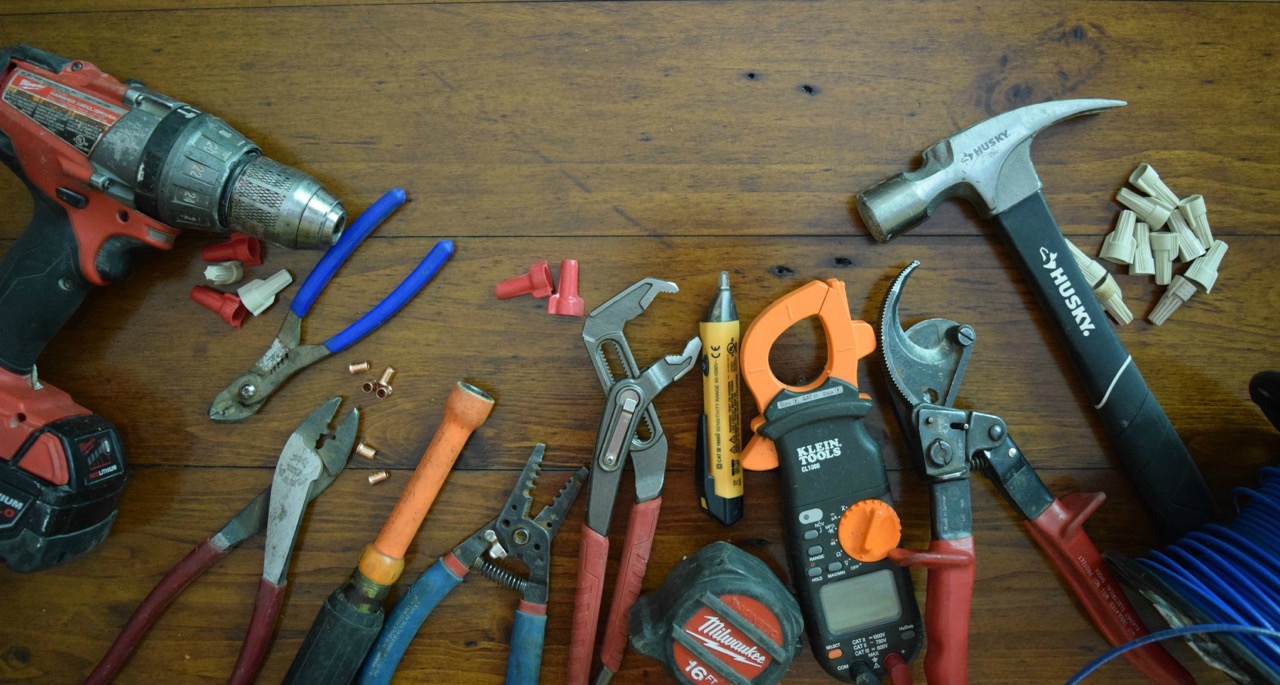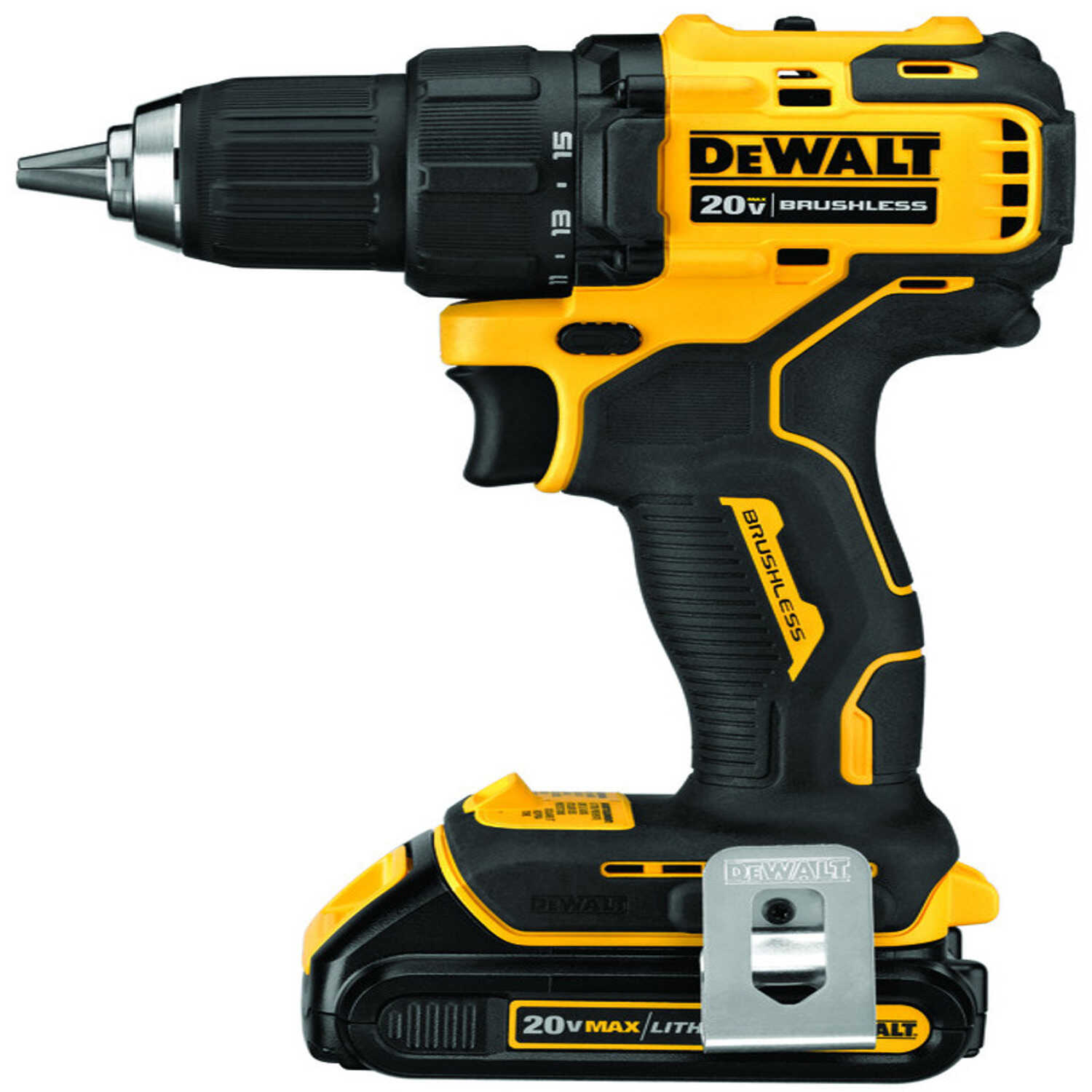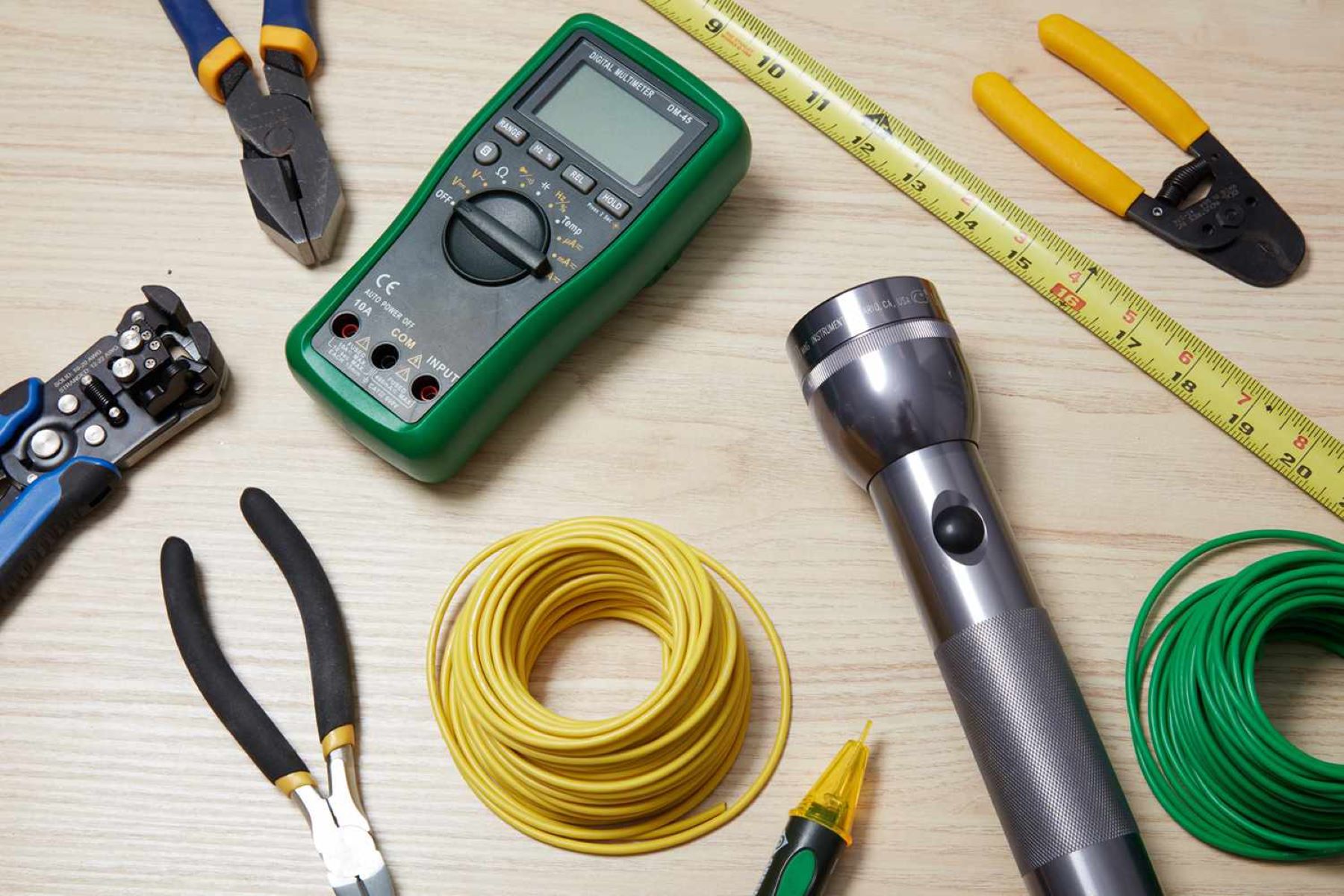Home>Articles>How Do Electrical Hand Tools Differ From Conventional Hand Tools


Articles
How Do Electrical Hand Tools Differ From Conventional Hand Tools
Modified: December 7, 2023
Discover the key distinctions between electrical hand tools and conventional hand tools in this insightful article. Learn how these tools differ in terms of power source, functionality, and applications.
(Many of the links in this article redirect to a specific reviewed product. Your purchase of these products through affiliate links helps to generate commission for Storables.com, at no extra cost. Learn more)
Introduction
In the world of hand tools, there are two main categories – electrical hand tools and conventional hand tools. Both serve the purpose of aiding in various DIY and professional tasks, but they differ in terms of their power source, operation, versatility, efficiency, safety, maintenance, and cost. Understanding the differences between these two types of tools can help users make informed decisions about which tools to choose for different projects and tasks.
In this article, we will explore the characteristics and distinctions between electrical hand tools and conventional hand tools. By the end, you will have a clear understanding of how these tools differ and the benefits they bring to the table.
Key Takeaways:
- Electrical hand tools are powered by electricity or batteries, offering efficiency, versatility, and consistent power output. They are ideal for heavy-duty tasks and provide convenience with adjustable settings for various applications.
- Conventional hand tools rely on manual force, providing control, portability, and cost-effectiveness. They are essential for precise tasks and offer simplicity, durability, and independence from power sources.
Definition of Electrical Hand Tools
Electrical hand tools are handheld devices that are powered by electricity rather than manual force. These tools use motors, batteries, or cords to provide the necessary power for operation. They are designed to perform a wide range of tasks efficiently and effectively.
Some common examples of electrical hand tools include electric drills, power saws, angle grinders, electric screwdrivers, heat guns, and many more. These tools are often preferred for their convenience and ability to handle heavy-duty tasks.
One of the key features of electrical hand tools is their power source. They may be corded, meaning they rely on a continuous supply of electricity from an outlet, or cordless, powered by rechargeable batteries. Cordless electrical hand tools offer great mobility and versatility, as they can be used in areas where a power socket is not easily accessible.
Electrical hand tools are designed to provide consistent power output, ensuring efficient and precise operation. They often come with adjustable speeds and settings, allowing users to control the tool’s performance based on the task at hand. This versatility makes electrical hand tools suitable for a wide range of applications, from woodworking and construction to automotive repairs and household maintenance.
Overall, electrical hand tools are known for their efficiency, power, and versatility. They enable users to complete tasks faster and with less effort compared to conventional hand tools, making them a valuable addition to any toolkit.
Definition of Conventional Hand Tools
Conventional hand tools are manually operated tools that do not require any external power source. These tools are designed to be used by hand, relying on the physical force exerted by the user to perform tasks. They have been used for centuries and have played a crucial role in various crafts, trades, and DIY projects.
Examples of conventional hand tools include hammers, screwdrivers, wrenches, pliers, hand saws, chisels, and many more. These tools are typically made from durable materials such as metal, wood, or plastic, and are designed with ergonomic handles for comfortable gripping and control.
Unlike electrical hand tools, conventional hand tools do not rely on electricity or batteries. Instead, they require the user to apply force directly to the tool to perform a specific action or task. For example, a hammer requires the user to strike it against a surface to drive nails, while a wrench uses the user’s strength to tighten or loosen bolts.
Conventional hand tools offer simplicity and reliance on human effort, making them accessible and easy to use for general tasks and small projects. They are commonly used in woodworking, plumbing, automotive repairs, and general maintenance.
One of the advantages of conventional hand tools is their portability and independence from power sources. They can be used anywhere and do not rely on the availability of electricity or batteries. Additionally, conventional hand tools are often more affordable compared to electrical hand tools, making them a budget-friendly choice for DIY enthusiasts and hobbyists.
While conventional hand tools require physical effort from the user, they provide a level of control and precision that is often desired in certain tasks. Their straightforward design and operation make them reliable and durable, allowing users to perform various tasks with accuracy and efficiency.
Conventional hand tools have been used for generations, and their timeless design and functionality continue to make them essential tools in any toolbox or workshop.
Power Source
The main distinction between electrical hand tools and conventional hand tools lies in their power source. Electrical hand tools are powered by electricity, either through cords that connect to power outlets or rechargeable batteries. On the other hand, conventional hand tools rely solely on the physical force exerted by the user.
Electrical hand tools, with their reliance on electricity or batteries, offer consistent and reliable power output. This allows for more efficient and effortless operation, as the tool does most of the work. The power source provides consistent torque and speed, making it easier to perform tasks quickly and accurately.
In contrast, conventional hand tools require physical force from the user to perform tasks. This can be advantageous in some situations where precise control is needed. The user can adjust the force applied based on the task’s requirements, allowing for more delicate or intricate work.
Electrical hand tools, especially cordless ones, provide greater mobility and flexibility. They can be used in various locations, as long as there is access to a power source or the batteries are charged. This makes them ideal for tasks that require movement or in areas without easy access to electricity.
Conventional hand tools, on the other hand, offer more portability and independence. They do not rely on any external power sources, allowing users to bring them anywhere and use them anytime. This makes them a preferred choice for outdoor projects, remote locations, or areas with limited power supply.
Overall, the power source of electrical hand tools provides consistent and reliable power output, enabling efficient and precise operation. Conversely, conventional hand tools rely on the user’s physical force, offering more control and flexibility in certain situations. The choice between the two depends on the specific needs of the task at hand and the user’s preferences.
Operation
The operation of electrical hand tools and conventional hand tools differs significantly due to their power source and design.
Electrical hand tools are designed to be operated with the ease of a power source, whether it’s an electrical cord or a rechargeable battery. With a simple press of a button or trigger, the tool is activated, and it performs the desired action. This makes electrical hand tools convenient and easy to use, especially for tasks that require repetitive or prolonged operation.
Many electrical hand tools also offer adjustable speed and settings, allowing users to customize the tool’s operation according to the specific task. For example, an electric drill can be set to different speeds depending on the material being drilled. This flexibility enhances the precision and efficiency of the tool, making it suitable for a wide range of applications.
Conventional hand tools, on the other hand, require manual operation and physical force from the user. The tool’s design is intended to provide the user with a comfortable and ergonomic grip for optimal control and leverage. Users may need to apply varying levels of force, depending on the task, to achieve the desired outcome.
For instance, when using a conventional hand saw, the user must exert force and guide the saw to cut through the material. Similarly, when using a wrench, the user manually tightens or loosens the bolt by applying force to the handle.
The operation of conventional hand tools requires more physical engagement and effort, which can be advantageous in situations where control, precision, or the ability to make adjustments on the fly are crucial. However, it can also be more tiring and time-consuming for tasks that require long periods of operation.
In summary, electrical hand tools offer convenient and effortless operation with the assistance of a power source. They provide speed and adjustable settings for enhanced precision. On the other hand, conventional hand tools rely on manual operation and physical force from the user, providing control and adaptability in certain circumstances. The choice between the two depends on the nature of the task and the user’s preferences and requirements.
When using electrical hand tools, always ensure that they are properly grounded and that the cords are in good condition to prevent electrical hazards.
Read more: How Do You Store Hand Tools
Versatility
When it comes to versatility, electrical hand tools and conventional hand tools have some key differences.
Electrical hand tools are designed to be versatile and adaptable to a wide range of tasks. They often come with multiple attachments, such as different drill bits or saw blades, which can be easily switched out to accommodate different materials or applications. This versatility allows users to use a single tool for various purposes, reducing the need for multiple specialized tools.
Additionally, electrical hand tools often have adjustable speed and settings, providing further versatility. Users can control the speed and power output of the tool based on the specific task requirements. This flexibility is particularly valuable when working with different materials or when precision is necessary.
On the other hand, conventional hand tools, while not as versatile as electrical ones, still have their own advantages. Traditional hand tools are often simpler in design and focused on specific tasks. They excel at those tasks and provide the user with precise control and maneuverability. For example, a hand saw may not be as versatile as an electric power saw, but it offers greater precision and control for detailed cutting.
Conventional hand tools are also less dependent on specific power sources, making them more versatile in terms of portability. They can be easily carried to different locations and used in various settings, without the need for electricity or batteries.
Ultimately, the choice between electrical hand tools and conventional hand tools depends on the nature of the tasks at hand. Electrical hand tools are highly versatile and adaptable to a wide range of applications, offering multiple settings and accessories for different tasks. Conventional hand tools, while less versatile, excel in specific applications and provide precision and control that may be necessary in certain situations.
Efficiency
When it comes to efficiency, electrical hand tools and conventional hand tools have distinct characteristics that impact their effectiveness in getting tasks done.
Electrical hand tools are known for their efficiency due to the power they derive from electricity or batteries. This power allows them to perform tasks quickly and with less physical effort from the user. The consistent power output of electrical hand tools ensures that each action or function is executed with precision and speed, resulting in efficient completion of tasks.
The adjustable speed and settings of electrical hand tools further enhance their efficiency. Users can adjust the tool’s power or speed according to the requirements of the task, allowing for optimal performance. This adaptability helps minimize errors, reduce the time required to complete a task, and improve overall productivity.
In contrast, conventional hand tools typically require more physical effort from the user, which can impact their efficiency. Tasks that involve repetitive or strenuous actions may require more time and energy to complete compared to using an electric tool. However, conventional hand tools excel in situations where precise control and manual finesse are required. Their simplicity and direct operation allow users to have greater control over the outcome, resulting in efficient and accurate work.
Additionally, the efficiency of both types of tools also depends on the user’s skill and experience. Regardless of the tool being used, a skilled operator can perform tasks more efficiently and effectively. Familiarity with the tool, proper technique, and practice can significantly improve the efficiency of using both electrical and conventional hand tools.
Ultimately, the choice between electrical hand tools and conventional hand tools in terms of efficiency depends on the specific task, the skill level of the user, and the desired outcome. Electrical hand tools generally offer a higher level of overall efficiency, especially for tasks that require speed and power. However, conventional hand tools shine in situations where precision and manual control are essential.
Safety
Safety is a critical aspect to consider when using any type of tool. Both electrical hand tools and conventional hand tools have specific safety considerations to keep in mind.
Electrical hand tools, especially those powered by electricity, come with their own set of safety features and precautions. These tools often have safety mechanisms, such as on/off switches, safety guards, and overload protection. It is important to use electrical hand tools in accordance with the manufacturer’s instructions and guidelines to ensure safe operation.
When using electrical hand tools, it is crucial to be aware of electrical hazards, such as the risk of electric shock or short circuits. Users should inspect the tool’s cord for any damage or wear before use and ensure it is properly grounded if necessary. Additionally, it is important to avoid using electrical hand tools in wet or damp conditions to minimize the risk of electrical accidents.
Cordless electrical hand tools, powered by rechargeable batteries, also require safety considerations. Users should follow proper charging procedures and use the specified charger to prevent overheating or damage to the battery. It is also important to store batteries in a cool, dry place and avoid exposing them to extreme temperatures.
Conventional hand tools, while not powered by electricity, still come with their own safety considerations. It is important to handle tools carefully, ensuring a secure grip and avoiding any potential hazards that may arise from improper use. Sharp edges on hand tools, such as chisels or knives, should be properly protected or stored to prevent accidental cuts or injuries.
Regardless of the type of tool being used, basic safety practices should always be followed. This includes wearing appropriate personal protective equipment, such as safety goggles, gloves, and ear protection. It is also important to maintain a clean and organized work area to reduce the risk of accidents or tripping hazards.
Furthermore, proper training and knowledge of the tool’s operation are crucial to ensure safe use. Users should familiarize themselves with the tool’s features, read the instruction manual, and seek guidance from professionals or experts when needed. Regular maintenance and inspections are essential to identify and address any potential safety concerns or defects.
In summary, both electrical hand tools and conventional hand tools require adherence to safety practices to minimize risks and ensure safe operation. Users should be aware of the specific safety considerations for each type of tool and follow proper procedures to protect themselves and others when using tools in any setting.
Maintenance
Maintenance is an important aspect of keeping hand tools in optimal condition for safe and effective use. Both electrical hand tools and conventional hand tools require regular maintenance to ensure their longevity and performance.
Electrical hand tools typically have more components and moving parts compared to conventional hand tools. Regular maintenance includes inspecting the tool for any signs of wear or damage, such as frayed cords or loose connections. It is important to replace any damaged or worn parts immediately to avoid the risk of accidents or malfunctions.
Cleaning electrical hand tools regularly is also essential for their maintenance. Dust, debris, or material residue can accumulate on the tool, affecting its performance. Carefully remove any debris and clean the tool using the recommended methods provided by the manufacturer. This prevents the buildup of dirt and extends the lifespan of the tool.
Battery maintenance is crucial for cordless electrical hand tools. Follow the manufacturer’s guidelines for charging and storage, ensuring that the batteries are properly maintained. Regularly inspect the batteries for any signs of damage, and replace them if necessary. Proper storage of batteries in a cool, dry environment is essential to prevent degradation and ensure optimal performance.
Conventional hand tools require less maintenance compared to electrical ones. However, it is still important to keep them in good condition for safe and efficient use. Regularly inspect conventional hand tools for any signs of wear or damage, such as rust or blunt edges. Clean the tools after use to prevent the buildup of dirt or corrosion, which can affect their performance.
Lubrication is often necessary for certain conventional hand tools, such as wrenches or pliers, to maintain smooth operation. Apply a small amount of lubricating oil to the moving parts to prevent rust and ensure proper functionality. Handle wooden handles of hand tools, such as hammers or chisels, with care to prevent splintering or cracking.
Proper storage is also vital for both types of tools. Ensure that electrical hand tools are stored in a dry and secure location, away from moisture or extreme temperatures. Keep them in protective cases or pouches to prevent damage during transportation or storage. Conventional hand tools should be organized and stored in a clean, dry area to prevent any accidents or damage.
In summary, regular maintenance is essential for both electrical hand tools and conventional hand tools. Conduct regular inspections, clean the tools, and replace any worn or damaged parts promptly. Proper storage and handling are also important to ensure the longevity and effectiveness of the tools.
Read more: What Hand Tools Do Farmers Use
Cost
Cost is an important factor to consider when choosing between electrical hand tools and conventional hand tools. The cost of tools can vary depending on various factors, including brand, quality, features, and functionality.
Generally, electrical hand tools tend to be more expensive than conventional hand tools. This is because electrical hand tools require more advanced technology, such as motors, circuitry, and batteries, which adds to their manufacturing and production costs. Additionally, the convenience and versatility offered by electrical hand tools contribute to their higher price point.
Cordless electrical hand tools can be particularly costly, as they involve the additional expense of rechargeable batteries and charging equipment. However, they provide the benefit of mobility and freedom from power cords, making them a valuable investment for certain tasks and settings.
Conventional hand tools, on the other hand, are often more affordable compared to electrical hand tools. They have a simpler design and do not require external power sources or advanced technology, which makes them more cost-effective. Basic hand tools such as hammers, screwdrivers, and wrenches are widely available at relatively low prices, making them accessible to a wide range of users.
Furthermore, the durability of both types of tools also impacts their cost-effectiveness. Well-made electrical hand tools and high-quality conventional hand tools, although initially pricier, can last for a long time and withstand heavy use. Investing in durable tools can potentially save money in the long run, as they will require less frequent replacement.
It is important to note that while electrical hand tools may have a higher price tag, they often offer enhanced efficiency, versatility, and time-saving benefits. These factors can contribute to increased productivity and cost savings, particularly for professional users or individuals who frequently engage in DIY projects.
Ultimately, the cost of tools should be evaluated alongside the specific needs and requirements of the task at hand. Consider factors such as the frequency of use, durability, features, and long-term value when making a decision. It may be worthwhile to invest in quality tools that align with your needs and offer a reasonable balance between cost and functionality.
Frequently Asked Questions about How Do Electrical Hand Tools Differ From Conventional Hand Tools
Was this page helpful?
At Storables.com, we guarantee accurate and reliable information. Our content, validated by Expert Board Contributors, is crafted following stringent Editorial Policies. We're committed to providing you with well-researched, expert-backed insights for all your informational needs.














0 thoughts on “How Do Electrical Hand Tools Differ From Conventional Hand Tools”